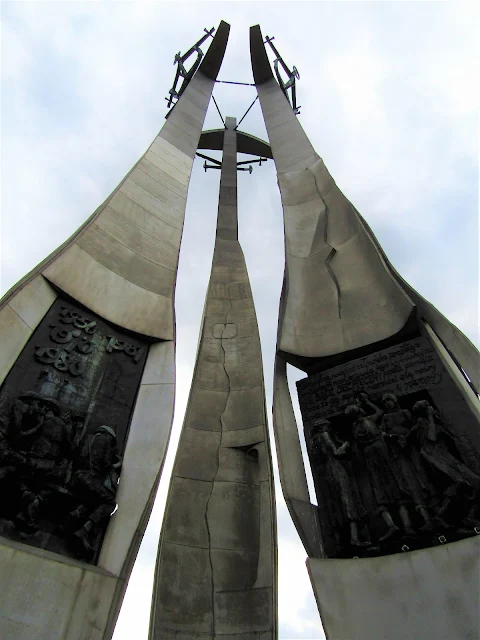In the heart of the picturesque city of Gdansk, Poland, stands a towering testament to the indomitable spirit of a people who yearned for freedom and justice. The Monument of the Fallen Shipyard Workers, located within the historic Gdansk Shipyard, serves as a solemn reminder of a pivotal moment in Poland's history and the birthplace of the Solidarity movement.
The monument, unveiled on December 16, 1980, is a striking work of art and symbolism. Three colossal steel crosses, each rising 42 meters into the sky, are interwoven to form a stylized anchor. This anchor not only pays homage to Gdansk's maritime heritage but also carries deep religious and national significance. It is a potent symbol of hope and steadfastness in the face of adversity.
The monument's history is intricately tied to the turbulent times of the 1970s. In December 1970, the Gdansk Shipyard became a battleground as Polish workers protested against the oppressive communist regime's policies, including increased food prices and dire working conditions. Tragically, these peaceful protests were met with brutal force, resulting in the loss of several lives. The monument stands as a memorial to those courageous workers who made the ultimate sacrifice.
The unveiling of the Monument of the Fallen Shipyard Workers coincided with the emergence of the Solidarity movement, led by the charismatic Lech Walesa. Solidarity championed workers' rights, democracy, and political reform. The monument swiftly became a powerful symbol of resistance against an authoritarian regime, serving as a rallying point for the movement that would change the course of Poland's history.
Today, the Monument of the Fallen Shipyard Workers remains a hallowed ground for commemorations, demonstrations, and events focused on labor rights and democracy in Poland. It stands as an enduring testament to the sacrifices made by the shipyard workers and their unwavering commitment to freedom and social justice.
Location: Plac Solidarności, 80-001 Gdańsk, Poland.
The Gdansk Shipyard area, with its iconic monument, has been recognized as a UNESCO World Heritage Site as part of the "Historic Centre of Gdansk." This international acknowledgment underscores the historical and cultural significance of the monument and its surroundings.

.jpg)

.jpg)
.jpg)
.jpg)